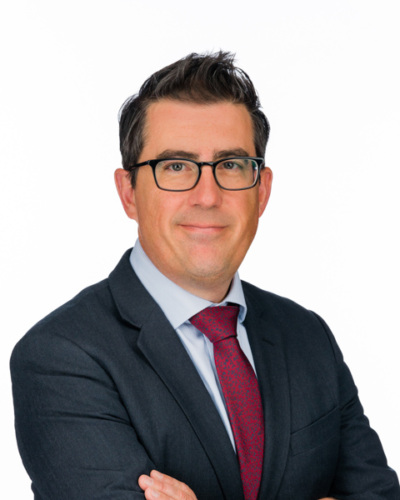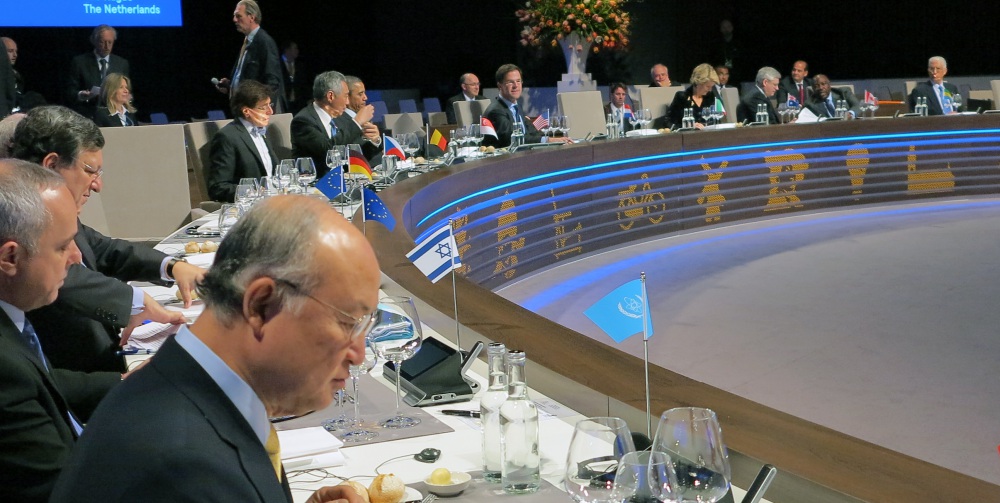
Scott A. Roecker
Vice President, Nuclear Materials Security
Atomic Pulse
In April 2009, few could have envisioned the far-reaching impact of a promise made by then-President Obama to convene a global summit on nuclear security. That promise of a single event in Washington, DC., turned into four head-of-state summits over six years that brought together more than 50 countries and international organizations and resulted in almost 1,000 new commitments to reduce nuclear dangers by better securing vulnerable nuclear materials and facilities against nuclear terrorism and other threats.
Today, as we reflect on the fifth anniversary of the last Nuclear Security Summit in 2016, it is clear that the summits made an important contribution to global security. At the same time, we now see a world that is less focused on nuclear risks. This may be understandable over the past year, as the world has battled the COVID-19 pandemic. But governments must be able to focus on concurrent threats, and the nuclear threat remains.
At that final summit, President Obama implored the leaders gathered to continue the work they started. “We cannot be complacent,” he said. “We have to build on our progress. We have to commit to better security at nuclear facilities; to removing or disposing of more dangerous material; to bringing more nations into treaties and partnerships that prevent proliferation and smuggling; and to making sure that we have the architecture in place to sustain our momentum in the years ahead.”
The roadmap is in place. The 2016 Nuclear Security Summit provided a framework for future work, through recommendations for how to strengthen the global nuclear security architecture and for new national commitments to improve nuclear security. Today’s leaders need to recommit to follow the path laid out just five years ago.
Action Plans
A key outcome of the Summits was recognizing the importance of an effective global nuclear security architecture. The 52 countries gathered at the 2016 Nuclear Security Summit unanimously endorsed "Action Plans" for five of the most prominent international organizations that address nuclear security issues: The United Nations, International Atomic Energy Agency (IAEA), INTERPOL, the Global Initiative to Combat Nuclear Terrorism (GICNT), and the Global Partnership. The “Action Plans” outline steps that countries committed to take to support and strengthen each of these institutions. Most require continuous attention to be effective. In keeping with their commitments, countries should:
These are just a few examples of the actions outlined in 2016 that countries should act upon in the coming months and years to re-energize attention on nuclear security.
Joint Statements
Countries also should make new commitments to improve nuclear security, and they can look to Nuclear Security Summit joint statements for opportunities to do so. Eleven statements (codified in IAEA Information Circulars) cover a wide range of activities, including committing to strengthen implementation of nuclear security measures consistent with IAEA guidance, and focus on topics such as insider threat mitigation and countering nuclear smuggling. Specifically:
Several countries have endorsed these statements in recent years, but this is an area where more should be done. Subscribing to these statements also provides an opportunity for increased assistance on these topics, through working with the other nations that have signed up or through the IAEA.
Renewed Senior-Level Attention
A third element that contributed to the success of the Nuclear Security Summit process was the inclusion of heads of state. This elevated the discussion of nuclear security within each nation and encouraged new commitments to secure or eliminate nuclear materials.
Today, in the absence of an international gathering on nuclear security, there are real challenges to engaging senior level leaders on the issue. There are ways to fill the gap, however. The IAEA provides several options, most notably through the International Conference on Nuclear Security series. The third such meeting was convened in February 2020 and Ministers endorsed plans to convene a fourth meeting in 2024. The annual IAEA General Conference is another opportunity to raise this issue to the senior level and can be a moment where nations can announce new commitments to enhance nuclear security as well as note recent accomplishments.
Leaders should look back to the successful conclusion of the final Nuclear Security Summit, recall the progress made toward reducing one of the world’s greatest threats, recommit to the agenda laid out in 2016, and regain the focus and momentum on building a safer world.
Sign up for our newsletter to get the latest on nuclear and biological threats.
Eugenia Zoloto is a Ukrainian artist who specializes in paper cutting, collages, and illustrations, in addition to working with oil paints and mixed mediums. She lives in Kyiv with her husband and two children and is participating in the 2023 #CranesForOurFuture campaign by contributing a beautiful floral sculpture featuring an origami crane.
Considering the current nuclear landscape, the power of Christopher Nolan’s film and the moral and ethical questions raised by J. Robert Oppenheimer’s work, movie viewers may be motivated to act to advocate for a world without nuclear weapons. But how?
If you want to learn more about Oppenheimer’s bomb and what we must do to protect the world today and for future generations, NTI’s online library is the perfect place to go.



